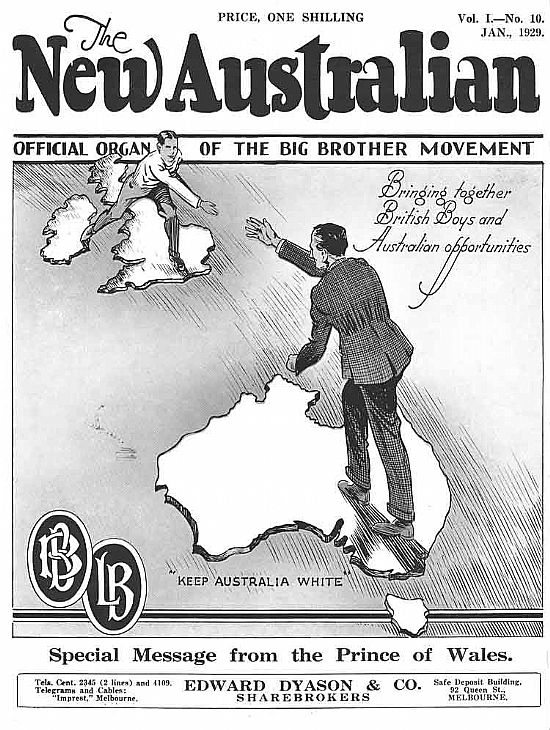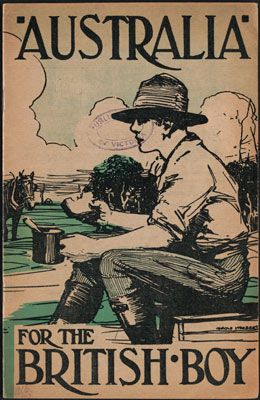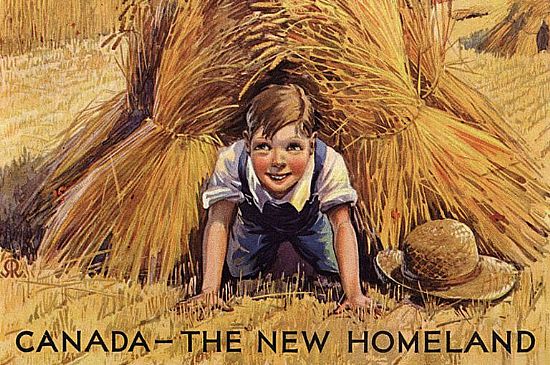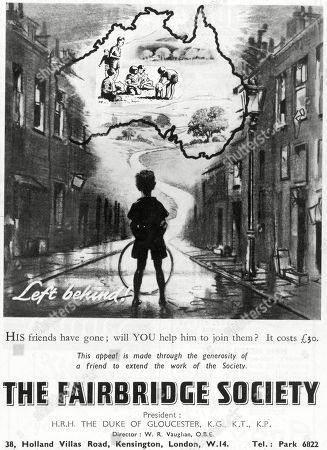Dreams to sell
Can ye no hush your weepin'
All the wee lambs are sleepin'
Birdies are nestlin' nestlin' together
Dream Angus is hirplin' o'er the heather
Dreams to sell, fine dreams to sell
Angus is here wi' dreams to sell
Hush ye my baby and sleep without fear
Dream Angus has brought you a dream my dear.
List' to the curlew cryin'
Faintly the echoes dyin'
Even the birdies and the beasties are sleepin'
But my bonny bairn is weepin' weepin'
Dreams to sell, fine dreams to sell
Angus is here wi' dreams to sell
Hush ye my baby and sleep without fear
Dream Angus has brought you a dream my dear.
Songwriters: George Churchill (pd) / Mandy Miller
Dream Angus lyrics © Imagem U.S. LLC
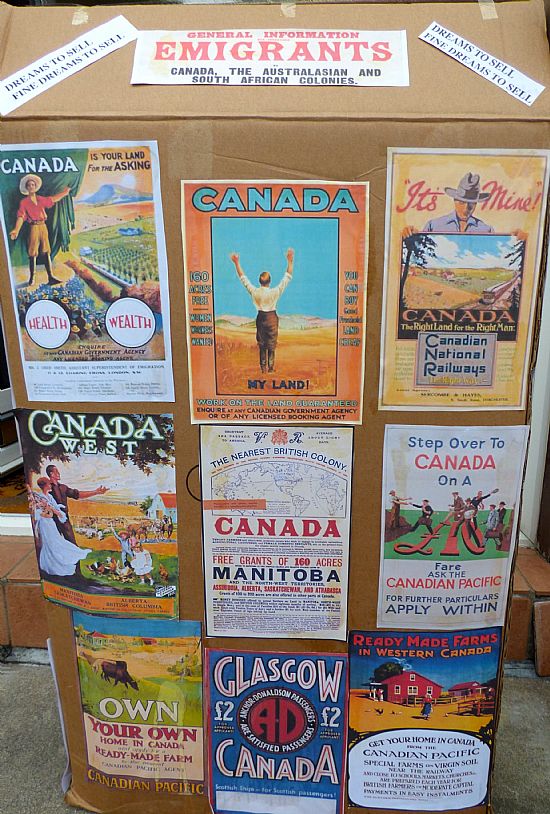
This “page” is a sample collection of the kind of advertising that was used to persuade colonists to take over “new lands” as their own. You may notice how much land was being offered as “empty” for colonisation.
All the myths as well as the realities of colonialism were being openly grafted on to the land along with the colonists.
It is fascinating to see who was being targetted and how the messages were adapted to the dreams and hopes of specific groups of people. See, for example, the two contemporary East India Company advertisements for London and Dublin.
Satirical cartoons indicate that not everyone was willing to dream. Single women looking for a husband were an easy target for such satire but they were actively "courted". The Jamestown, Virginia, plea for wives was the earliest example but the later ones are very specific about expectations.
A few of the home-children posters are painful to look at now when we know how some children were actually exploited and abused. Good intentions sometimes turn dreams into nightmares and the colonies have a number of examples of philanthropy as well as ambitions that went awry.
Some advertisements also strike us as being quite funny today. All are worth a close look.
I hope that they will encourage more research into this aspect of the push/pull factors of migration.
East India Company Recruiting in England and Ireland
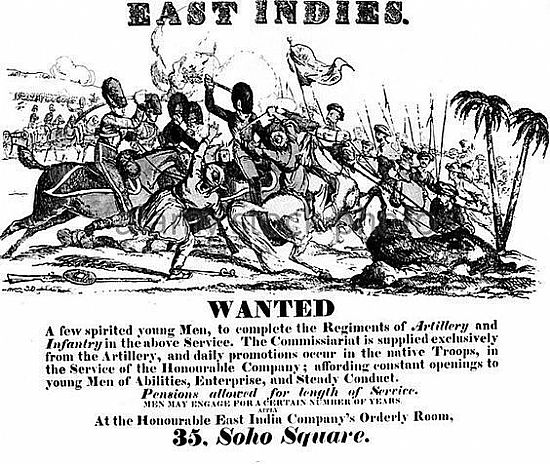
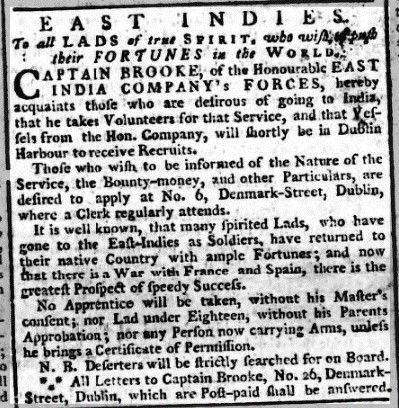
Women Wanted!

Many of the first colonists were single males so "suitable" women were encouraged to go out to Jamestown, Virginia, to negotiate for husbands.
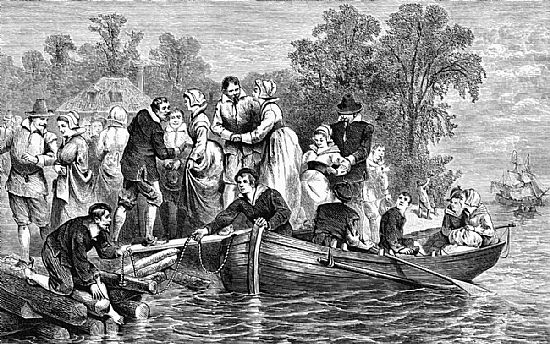 Jamestown, Virginia, "wives" arriving (Getty image)
Jamestown, Virginia, "wives" arriving (Getty image)
They are often referred to as "the first mail-order brides".
The Southern hemisphere colonies also had a huge imbalance of males to females.
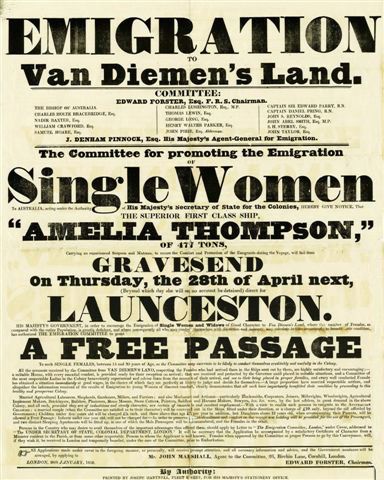
This poster is clear only in part and offers a nice example of bureaucratic fine print that can be easily missed. Below is a further printed text which may help, though it too has marked changes in the size of print and fonts. Apologies for the quality of the reproductions. It is worth taking time to read the newspaper article in full, however, if you can enlarge it sufficiently on your computer to do so. I wanted to leave both the poster and the newspaper advertisement in their original formats as the presentation is very much part of the "message".
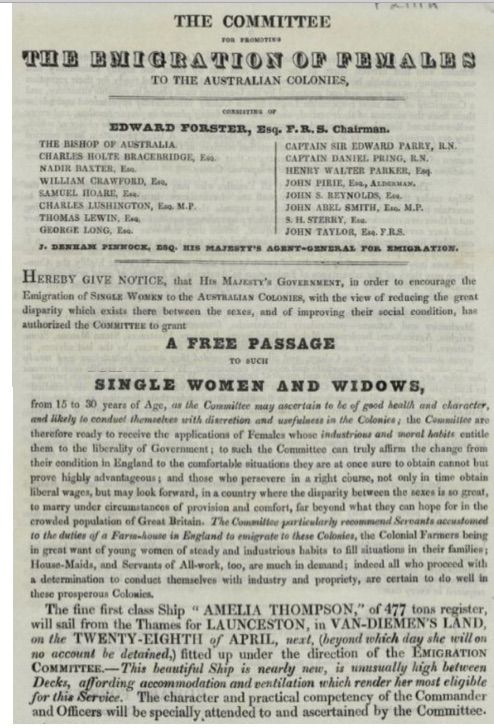
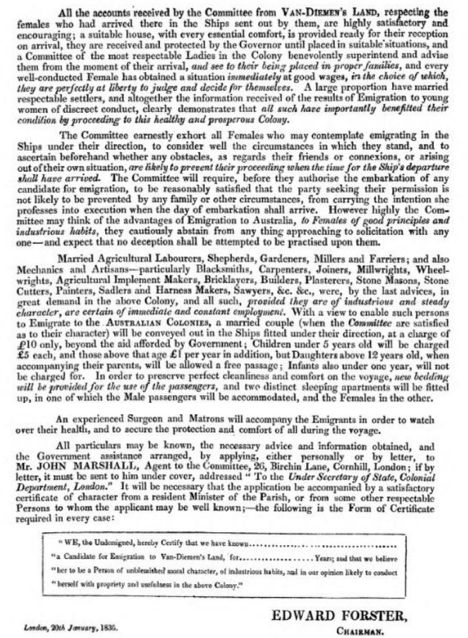
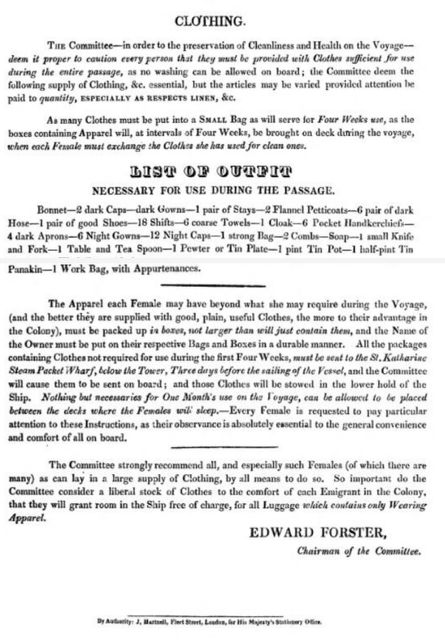
A satirical view of a womanly response.
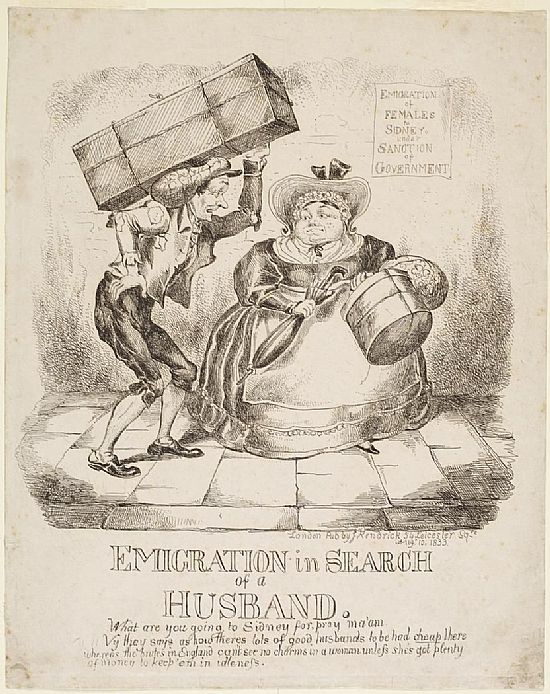
The text here may also be difficult to read on some computers: The poster says:
"Emigration of females to Sydney under sanction of the Government."
The Porter asks: "What are you going to Sydney for pray ma'am"
She replies: "Vy (Why) they says as how there's lots of good husbands to be had cheap there, whereas the brutes in England can't see no charms in a woman unless she's got plenty of money to keep 'em in idleness"
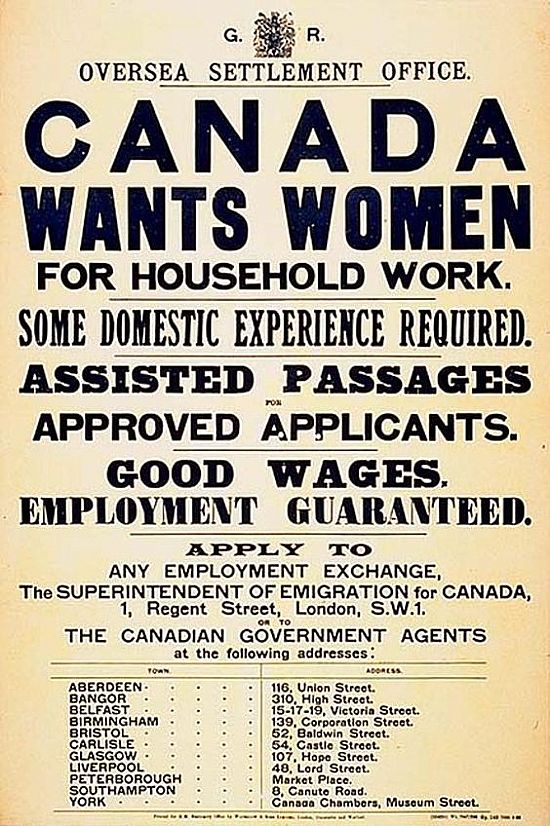
Other kinds of working men as well as pioneer farmers were soon in demand .
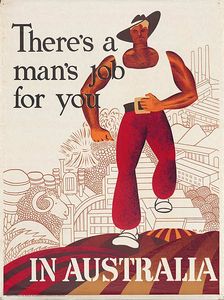

The essential text in the above advertisement reads as follows
"The [Canterbury] Association will grant Assisted Passages to PORT LYTTLETON, in the Canterbury Settlement, in the Ships that Sail during February-March, to a limited number of the Working Classes, being Gardeners, Shop-keepers, Farm Servants, Labourers, and Country Mechanics. The Emigrants must be of the highest Character for Piety, Steadiness and respectability, as certified by the Clergyman of their Parish".
Soon more specialist skills were being canvassed
This advertisement is even more specific about the needed skills in Canadian immigrants. The most important ones seem to be related to clothing people!
Finally white collar workers were being recruited.

The opportunities seemed to multiply over time around the world. No wonder so many people were attracted to a life in countries that seemed to offer better climates and better prospects.
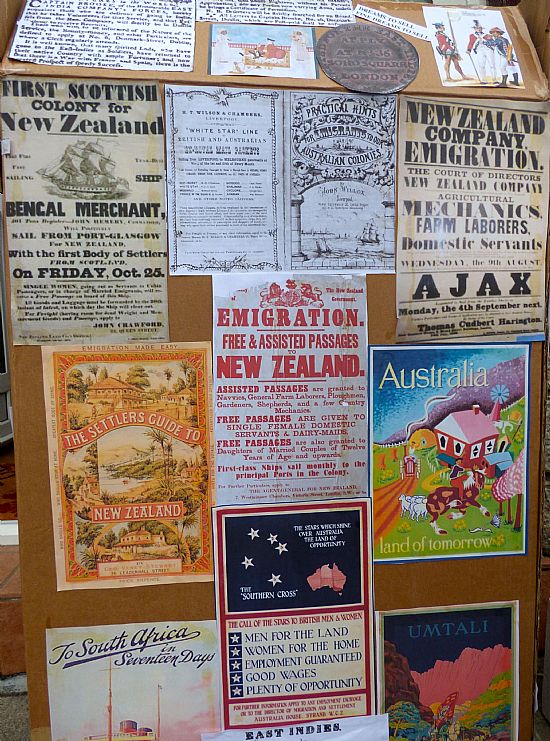
Not everyone was enthusiastic though.
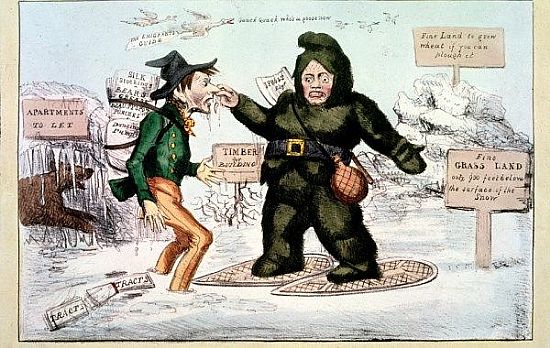
This Petworth cartoon is dated 1844. At present I do not know which publication it appeared in.
For some the temptations led to frantic decisions. The Aberdeen Journal on Wednesday June 8th 1856 published this story about the departure of one group of shepherds on the previous day.
"Emigrant Shepherds: On Tuesday morning eleven shepherds from Lochaber, with 12 women, and a due proportion of collies or shepherds’ dogs, left Inverness by the “Duchess of Sutherland” for London, whence they proceeded by the “Hoogley” to the far distant pastures of Van Dieman’s Land.
A gentleman in the colony is desirous of trying how our Highland shepherds will succeed with the flocks of that country which consist of a breed between the Cheviot and Merino, and as he offered very advantageous terms, there was no difficulty in finding men willing to make the experiment.
One of the Highlanders, learning in Lochaber that Government had offered a bounty of £20 to all married men and not being provided with a helpmate, set about supplying this deficiency.
He had only three days to accomplish the task of courtship and marriage, and he met with two refusals.
At length, on the last day that he could remain at home, he popped the question to a decent young woman, who gave her assent. Her friends refused, but the parties got on board the steam-boat in the Canal for Inverness, and were determined to be united.
They had great difficulty finding a minister to tie the knot, but as the vessel was passing through Gairlochy lock at 6 o’clock on Saturday morning, fortunately a clergyman came aboard for a few minutes, and the ceremony was perfomed to the no small joy of the parties and the amusement of sundry Englishmen, passengers, who got on deck, with nightcap and greatcoat to witness a marriage in Gaelic.
The invitation to travel was soon extended to the "world and his wife" The world was, however, distinctly limited to Europe.

The opportunities for the 'right people" began to look limitless. No wonder people began to feel that the whole world was theirs for the taking.

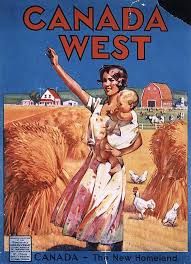

Perhaps the most poignant of all are the ads which feature the good life for children.

